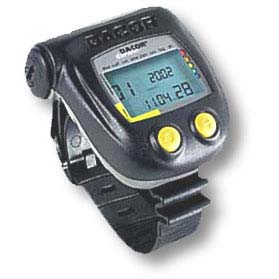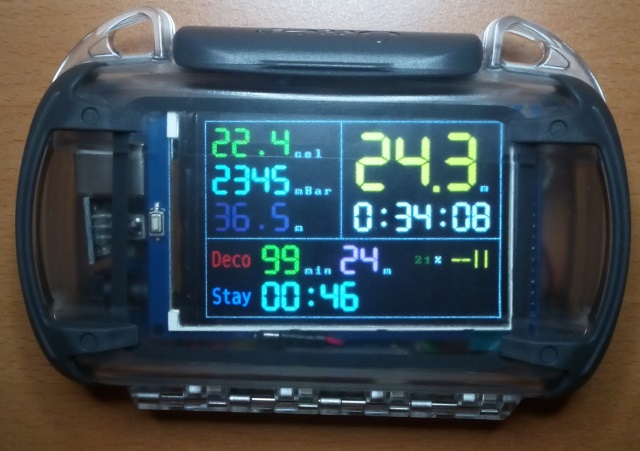Introduction
Hello, my name is Kornel Schrenk. I would like to share some thoughts with you about why I started this project, which is about to build (yet another) scuba dive computer. In brief I wanted to prove to myself that I can build one on my own! :)
I don’t want to get rich from selling dive computers to people like you. Instead I would like to give you some ideas and piece of advices about how you can build your own DIY Dive Computer! This means that all materials on this site are Open Source, so use it with caution and at your own risk! I can give you a helping hand, but the responsibility is yours! It is a good idea to use a commercial dive computer as your main device and only use your DIY version as an experimental device. If it works than it proves that you can also build one!
If you wish you can stop here and jump to the other articles located on this site, which contain more information about how to assemble the computer. Or you can read on to understand my inner motivations and the story behind DiveIno.
Introduction
I am from Hungary. This is a small Central European country where most people only speaks Hungarian and the nearest see - the Adriatic Sea in Croatia - is about 6 hours drive from its capital.
Actually it was 8-10 hours when I first met scuba diving. I just finished my university studies and passed my intern period as a Junior Java Developer at EPAM Systems. The year was 2005. During the summer I was invited by my Tisa Tour Guide - Mr. Istvan Eperjesi - to take part in one of his Open Water Scuba Diver courses. I got certified and started to save some money to buy my own diving equipment.
One of my first purchase was a brand new Dacor Darwin dive computer! It was really expensive! Almost 200 EUR!

That time was the renaissance of scuba diving education. People wanted to go under water. Hundreds of instructors were trained, who wanted to get their own slice of the cake and organized trainings for the newcomers. There was an opportunity to became a certified instructor, but I decided to stay a recreational diver and pursue my carrier in software engineering.
If I look back now, it was the right decision, because the financial crisis hit really hard the scuba diving industry in the year of 2008-2009. People had to save money, so first they sacrifised their expensive hobbies like scuba diving. Besides that who had interest and motivation to look around in the underwater world already did it by that time, because there were so many possibilities for that even in a small Central European country like Hungary.
As a contrast software engineering survived the crisis. Lot of revolutionary products were introduced in the recent years like for instance smartphones. People would like to learn programming and take part in the next gold rush called start-up companies.
Maker culture
Besides the commercial aspects the Maker culture was born. In a nutshell it is about to make products on your own instead of purchase it in a store. These products are created from Open Source hardware and software. The Maker’s Manual: A Practical Guide to the New Industrial Revolution discusses this philosophy and the applied tools in great details.
The previously cited Wikipedia article defines the following maker segments:
- Zero to maker
- Maker to maker
- Maker to market
The first segment is about to create a prototype. Once you have it, make it available to the other makers and finally if unique ideas came out of it, bring to the consumer market.
A classic example for this process is the history of the Arduino platform. Another and much more relevant example is the OpenROV project.
Maker as a diver
As I said previously I am still a recreational diver who goes underwater during his holidays. On these trips I have the chance to clean up my mind from the every day stress usually happens in the office. I started to brainstorm how I can join together these two activities: software engineering and scuba diving. I wanted to do something, which is hard, but possible to achieve. I looked at my old Dacor Darwin dive computer and asked the question from myself shall I buy a new model or try to make it on my own?
I decided about two years ago that I will make my own computer and became a “maker”.
The decision was easy, but how to get to a working prototype? What kind of hardware parts shall I use? What about the software? How shall I make it waterproof? How shall I test it?
I believe after 2 years I reaced the point when I can say that I have a working prototype and I did the “zero to maker” transition.

The next step in the Maker culture is to reach the next level - Maker to maker - and share what I made with all of you. This is the reason why I started this website and I decided to write a couple of articles about how I made it.
Please read on and let me know your comments and suggestions! Thank you very much for your time!

